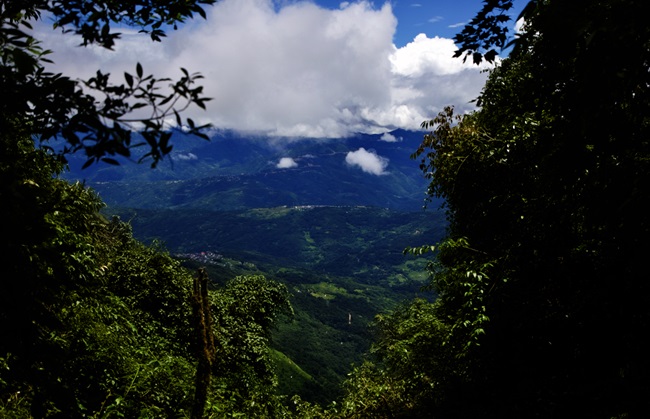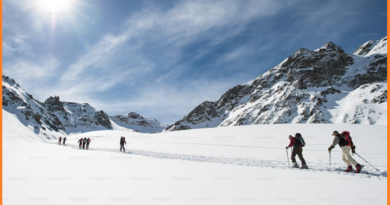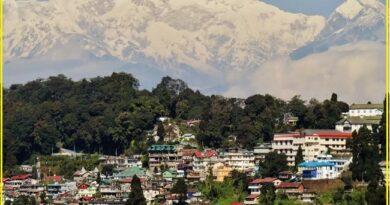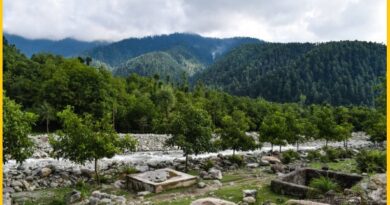Dzuko Valley: A Trekker’s Paradise in Manipur
Dzuko Valley Manipur
Dzuko Valley is a picturesque region located on the border of the Indian states of Manipur and Nagaland. Dzuko Valley is renowned for its stunning natural beauty, characterized by rolling hills, lush greenery, and colorful flora. It is particularly famous for its vibrant display of Dzukou lilies, which bloom during the monsoon season, covering the valley in a carpet of white flowers.
The valley is a popular trekking destination, attracting adventure enthusiasts and nature lovers from around the world. The trek to Dzuko Valley offers breathtaking views of the surrounding landscape and is a memorable experience for those who undertake it. Dzuko Valley holds cultural significance for the indigenous tribes of the region, including the Naga tribes. It is often associated with local folklore and traditions, adding to its allure and mystique.
The valley is home to a diverse range of plant and animal species, including several rare and endemic varieties. It provides habitat to wildlife such as deer, wild boars, and various bird species, making it a paradise for nature enthusiasts and wildlife photographers. Due to its ecological importance, efforts are underway to conserve and protect Dzuko Valley. Conservation initiatives aim to preserve its biodiversity and ensure sustainable tourism practices to safeguard its natural beauty for future generations.
1. Dzuko Valley History
Dzükou (or Dzüko) Valley, located on the border of the Indian states of Manipur and Nagaland, has a rich history intertwined with the cultural heritage of the indigenous tribes of the region, particularly the Naga tribes. The valley has been inhabited by Naga tribes for centuries, and it holds significant cultural and traditional importance for these communities. It has been a part of their ancestral lands and has played a role in their folklore, rituals, and way of life.
While specific historical records about Dzükou Valley may be limited, it is believed that the valley has been a crucial part of the historical and cultural landscape of the region for generations. It has likely witnessed the passage of various tribes, traders, and travelers over the years. During the colonial era, the region where Dzükou Valley is located came under the influence of British colonial rule. The arrival of the British had significant impacts on the indigenous communities and their traditional way of life, although the remote nature of the valley may have somewhat insulated it from direct colonial administration.
Also read- 8 Stunning Places to Visit in Bishnupur Manipur
After India gained independence from British rule in 1947, the region where Dzükou Valley is situated became part of the newly formed Indian Union. Over the years, the valley has seen developments in infrastructure and tourism, with efforts made to promote its natural beauty and trekking opportunities. Despite modernization and changes brought about by external influences, efforts have been made to preserve the cultural heritage and traditions associated with Dzükou Valley. Local communities continue to uphold their customs and practices, and the valley remains an important cultural and spiritual symbol for the indigenous tribes of Manipur and Nagaland.
2. Dzuko Valley Trek
The Dzuko Valley Trek is a popular hiking trail that takes trekkers through the breathtaking landscapes of the Dzuko Valley, located on the border of the Indian states of Manipur and Nagaland. Duration: The Dzuko Valley Trek typically takes around 2-3 days to complete, depending on the starting point and the pace of the trekking group. It involves both ascending and descending terrain, so a moderate level of fitness is recommended. Starting Point: The trek usually begins from either the Manipur side or the Nagaland side of the border, with the most common starting points being Viswema village in Nagaland or Mao Gate in Manipur. Trekkers can choose their starting point based on convenience and accessibility.

Trail Difficulty: The trek is considered moderately challenging, with sections of steep ascents and descents, rocky terrain, and narrow pathways. Trekkers should be prepared for varying weather conditions, including hot sun, rain, and cold temperatures, depending on the season. Scenic Beauty: One of the highlights of the Dzuko Valley Trek is the stunning natural beauty along the trail. Trekkers are treated to panoramic views of lush green hills, dense forests, cascading waterfalls, and colorful wildflowers, especially during the peak blooming season of the Dzukou lilies, which usually occurs in June-July.
Camping: Overnight camping is a common part of the Dzuko Valley Trek experience. Trekkers can set up campsites at designated camping spots along the trail, where they can enjoy the tranquility of the surroundings and the clear night skies. It’s essential to carry adequate camping gear, including tents, sleeping bags, and cooking equipment. Permits and Regulations: Since Dzuko Valley is situated on the border of two states, trekkers may need permits or permissions from local authorities, depending on the current regulations. It’s advisable to check with the relevant authorities and obtain any necessary permits before embarking on the trek. Guided Tours: While it’s possible to trek independently, many trekkers opt for guided tours or hire local guides familiar with the terrain and trails. Guides can provide valuable assistance, navigation support, and insights into the local culture and flora/fauna.
3. How to Reach Dzuko Valley
The nearest major airport is in Imphal, the capital city of Manipur. Imphal Airport (Tulihal Airport) is well-connected to major cities in India, including Delhi, Kolkata, and Guwahati. From Imphal, you can proceed to the starting point of the trek, which is usually either Viswema village in Nagaland or Mao Gate in Manipur, via road.
There are no direct train services to Manipur or Nagaland. The nearest major railway station is in Dimapur, Nagaland, which is well-connected to cities like Guwahati in Assam. From Dimapur, you can hire a taxi or take a bus to reach the starting point of the trek. The most common way to reach Dzuko Valley is by road. You can either hire a taxi/private vehicle or take a bus from nearby towns or cities to reach the starting point of the trek. From Imphal, it takes around 2-3 hours by road to reach Mao Gate, which is one of the starting points. Similarly, Viswema village in Nagaland is accessible by road from Dimapur or Kohima.
Once you reach the starting point of the trek (either Viswema village or Mao Gate), you’ll need to trek on foot to reach Dzuko Valley. The trekking trail passes through hilly terrain, dense forests, and scenic landscapes, so be prepared for a challenging yet rewarding journey. It’s advisable to seek local assistance and guidance, especially if you’re unfamiliar with the area or trekking routes. You can hire local guides or join guided tours organized by trekking agencies or tour operators, who can provide transportation, logistics support, and assistance throughout the trek.



